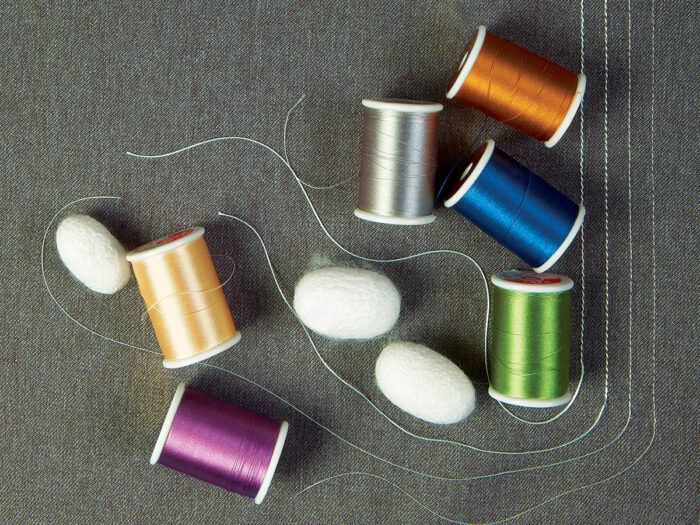Silk Thread Demystified
You’ve admired its beauty, now learn why it’s a natural for construction
Synopsis: With understanding of its origin, care, and how to match thread type to projects, silk thread is an unparalleled asset as a machine-sewing thread. In this article, Maggie Backman explains the difference between the two types of silk thread, spun and filament. She focuses on the extraordinary qualities of silk filament thread, which is a superior sewing machine thread when the correct twist and weight is selected for a project. Backman discusses her secret to selecting thread for a project and introduces us to sericulture.
If silk thread were a person, it would be a supreme overachiever. It has properties valuable to anyone seeking perfection in sewing projects. It is strong and fine, flexible and durable, long-lasting and lint-free. Yet it has carried a slightly nefarious reputation as a sewing-machine thread. There are claims that it snags and breaks in machines, that garments made with it must be dry-cleaned, or that it can shear right through fabric, destroying seams.
The truth is, with understanding of its origin, care, and how to match thread type to projects, silk thread is an unparalleled asset as a machine-sewing thread.
I’ll explain the difference between the two types of silk thread, spun and filament. Then, I’ll focus on the extraordinary qualities of silk filament thread, which is a superior sewing machine thread when the correct twist and weight is selected for a project.
I’ll debunk commonly held misconceptions about silk thread and open your consideration to constructing garments with it—not just decorating them.

Meet two silk thread types
Silk thread is available in…
Start your 14-day FREE trial to access this story.
Start your FREE trial today and get instant access to this article plus access to all Threads Insider content.
Start Your Free TrialAlready an Insider? Log in





































Log in or become a member to post a comment.
Sign up Log in